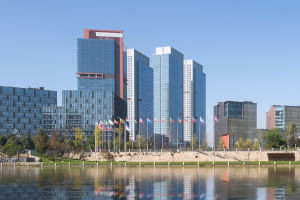Photovoltaic building integration refers to the practice of incorporating solar panels directly into building design and construction, rather than simply adding them as an afterthought. This approach has numerous benefits, both for the environment and for building owners and occupants.
One of the primary benefits of photovoltaic building integration is that it helps to reduce the carbon footprint of buildings. By generating clean energy on-site, buildings can reduce their reliance on fossil fuels and decrease their greenhouse gas emissions. This is particularly important given that buildings are responsible for a significant portion of global energy consumption and emissions.
In addition to the environmental benefits, photovoltaic building integration can also be financially advantageous for building owners. By generating their electricity, buildings can reduce their reliance on the grid and potentially save money on energy bills.
Depending on the size of the solar installation, buildings may even be able to generate excess energy that can be sold back to the grid, providing an additional source of revenue.
Beyond the financial and environmental benefits, photovoltaic building integration can also have aesthetic benefits. Incorporating solar panels directly into building design can create a unique and modern look, and can even be used as a design feature. This can help to set buildings apart from others in the surrounding area, and can even increase their value.
Some iconic buildings that have incorporated photovoltaic building integration include:
1. The Edge, Amsterdam: This office building is often referred to as the greenest in the world, thanks in part to its extensive use of solar panels. The building's rooftop is covered in over 4,000 solar panels, which provide more than enough energy to power the entire building.
2. One Angel Square, Manchester: This office building is another example of how solar panels can be integrated into building design in an aesthetically pleasing way. The building features a distinctive "solar chimney" that uses the sun's energy to naturally ventilate the building, reducing the need for mechanical cooling.
3. Bahrain World Trade Center: This iconic skyscraper features three wind turbines mounted between its two towers, as well as a series of solar panels integrated into the building's facade. Together, these renewable energy sources provide a significant portion of the building's energy needs.
4. The CIS Tower, Manchester: This 25-story office building was one of the first in the world to incorporate solar panels into its design. The building's south-facing facade is covered in over 7,000 solar panels, which generate enough energy to power 200 homes.
5. The Heliotrope, Germany: This innovative residential building is designed to follow the path of the sun, maximizing solar gain throughout the day. The building's rooftop is covered in solar panels, which generate enough energy to power both the building and a nearby electric car.
Photovoltaic building integration has numerous benefits, both for the environment and for building owners and occupants. By generating clean energy on-site, buildings can reduce their reliance on fossil fuels, potentially save money on energy bills, and even create a unique and modern look.
As technology continues to improve and the cost of solar panels continues to fall, we will likely see more and more buildings incorporating photovoltaic building integration into their designs in the years to come.


